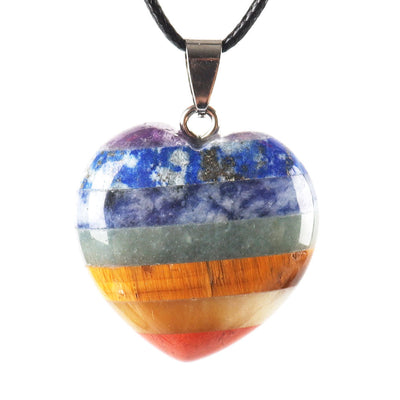In the world of spiritual tools and sacred adornments, few items are as revered and potent as the Tulsi Mala. Far more than just a string of beads, this sacred necklace is a conduit for divine energy, a symbol of protection, and a powerful aid for meditation. For spiritual seekers and yoga practitioners, understanding the tulsi mala benefits and its profound meaning can elevate a daily practice into a transformative journey. Whether you're new to this path or looking to deepen your connection, this guide will illuminate the history, purpose, and proper use of this cherished spiritual tool.
The Tulsi plant, also known as Holy Basil, is considered one of the most sacred plants in Hinduism, embodying purity and divine presence. A Tulsi Mala, crafted from the wood or seeds of this plant, carries its sanctified energy, offering a direct link to spiritual devotion and inner peace. Let's explore how you can welcome its blessings into your life.
The Sacred Meaning of the Tulsi Mala
At its core, a Tulsi Mala is a symbol of devotion, primarily associated with Lord Vishnu and his avatars, such as Krishna and Rama. According to ancient scriptures, Tulsi is a manifestation of the goddess Lakshmi, the consort of Vishnu, and is beloved by him. Wearing a mala made from her wood is believed to grant the wearer the protection and blessings of Vishnu. Each of the 108 beads on the string represents a repetition of a mantra, a sacred cycle that helps quiet the mind and open the heart. The 109th bead, known as the Guru bead or Sumeru, signifies the transcendent state one aims to achieve through practice and serves as a starting and ending point for meditation, reminding us not to cross over our spiritual teacher or our own limitations without awareness.

Unveiling the Benefits of Wearing a Tulsi Mala
The benefits of a Tulsi Mala are multifaceted, touching the spiritual, mental, and even physical aspects of our being. Devotees and spiritual practitioners have cherished these beads for centuries for their powerful properties. When worn with reverence and intention, a Tulsi Mala can become a source of constant strength and tranquility.
- Spiritual Protection: It is believed to create a protective shield (kavacha) around the wearer, warding off negative energies, psychic attacks, and evil spirits.
- Purification: Tulsi is renowned for its purifying properties. Wearing the beads is thought to cleanse the mind, body, and soul, promoting a sattvic (pure and harmonious) state of being.
- Enhanced Concentration: Using a tulsi mala for Jaap (mantra chanting) helps improve focus and concentration, making meditation deeper and more effective.
- Emotional Balance: The calming energy of Tulsi can help reduce stress, anxiety, and mental clutter, fostering a sense of peace and emotional stability.
- Connection to the Divine: It strengthens devotion and deepens the wearer's connection to Lord Vishnu or their chosen deity, acting as a constant reminder of their spiritual path.
How to Use Your Tulsi Mala for Japa Meditation
Japa meditation is the practice of repeating a mantra, and the Tulsi Mala is the perfect tool to guide this sacred ritual. It helps you keep count of your recitations while keeping your mind focused on the vibration of the mantra. This practice helps to internalize the mantra's energy, leading to profound spiritual transformation.
- Find a Quiet Space: Sit comfortably in a clean and peaceful environment. You can light a candle or incense to create a sacred atmosphere.
- Set Your Intention: Hold the mala in your hands and take a moment to set a clear intention for your practice.
- Hold the Mala Correctly: The mala should be held in your right hand, draped over your middle finger, and the beads moved with your thumb. The index finger, which is associated with the ego, should not touch the beads.
- Begin Chanting: Starting with the bead next to the Guru bead, recite your chosen mantra. With each recitation, gently pull the next bead towards you with your thumb.
- Complete the Cycle: Continue until you have chanted the mantra 108 times and reached the Guru bead again. Do not cross over the Guru bead. To continue for another round, turn the mala around and go back in the opposite direction.
Integrating other sacred items into your practice can further enhance its energy. A complementary bracelet can serve as a constant reminder of your intentions throughout the day.

Unisex Rudraksha Bodhi Seed Dzi Bead Bodhi Seed Mala Bracelet
$25.90 $37.90
Invite spiritual protection and traditional energy to your practices with this Bodhi Seed and Rudraksha Mala Bracelet—perfect companion for Tulsi Mala users.
Explore Product
The Essential Rules for Wearing and Caring for a Tulsi Kanthi Mala
A Tulsi Kanthi Mala, one that is worn around the neck, is not just an accessory but a sacred commitment. To maintain its sanctity and receive its full benefits, it is important to follow certain traditional rules. These guidelines ensure that the mala is treated with the respect it deserves.

Observing these rituals is key to honoring the mala's spiritual energy. For a deeper understanding of the traditions and rules associated with wearing these sacred beads, the following video offers valuable insights.
Key Guidelines to Follow:
- Maintain Purity: It's essential to maintain personal hygiene while wearing the mala. Many traditions advise removing the mala before sleeping, bathing, or engaging in intimate activities.
- Dietary Considerations: Practitioners are often advised to follow a sattvic (vegetarian) diet and abstain from consuming alcohol or other intoxicants while wearing a Tulsi Mala, as this honors its pure energy.
- Keep it Personal: Your mala attunes to your personal energy and intentions. It should not be worn or used for chanting by anyone else.
- Proper Handling: Never let your Tulsi Mala touch the floor or be placed in an unclean area. When not in use, store it in a clean, sacred space, such as on an altar or in a dedicated pouch.
- Cleansing the Mala: Periodically, you can cleanse the mala by gently wiping the beads with a clean, damp cloth. You can also energize it by exposing it to moonlight or the smoke of incense.
For more information on the properties of Holy Basil, you can explore scientific research such as this comprehensive review on Tulsi's benefits from the National Center for Biotechnology Information.
Choosing an Authentic Tulsi Mala
When selecting a Tulsi Mala, authenticity is paramount. A genuine mala is typically made from the wood of the Tulsi plant, with each bead being unique. The beads should feel light and have a subtle, woody aroma. Be wary of malas made from plastic or other materials passed off as Tulsi. Sourcing your mala from a trusted and reputable provider ensures that you are receiving a sacred tool that has been crafted with respect and integrity. An authentic mala will serve you for years as a faithful companion on your spiritual journey, its energy deepening with every prayer and mantra.
Complement Your Sacred Practice
Symbolize your journey to spiritual awakening with this Bodhi Seed Lotus necklace—wear it to amplify meditation with Tulsi Mala rituals. Learn more ➔
Balance your energy and intention with this genuine Rudraksha and Bodhi Seed bracelet—ideal for sacred routines with your Tulsi Mala. Learn more ➔
Embrace the Sacred Path
The Tulsi Mala is more than a beautiful piece of spiritual jewelry; it is a key that can unlock deeper states of consciousness, provide unwavering protection, and connect you to a lineage of devotion. By understanding its meaning, embracing its benefits, and honoring the traditions of its use, you can integrate this powerful tool into your life in a meaningful way. Let your Tulsi Mala be a constant companion, guiding your meditations, calming your mind, and reminding you of the sacred peace that resides within.
Frequently Asked Questions about Tulsi Mala
The primary purpose of a Tulsi Mala is to serve as a tool for Japa (mantra meditation), aiding concentration and helping the practitioner count mantra repetitions. It also functions as a sacred symbol of protection, purification, and devotion to divine figures in Hinduism, particularly Lord Vishnu and Krishna.
Rather than an outright prohibition, traditional guidelines focus on maintaining the sanctity of the mala. It is advised that one should maintain a level of purity (sattva) while wearing it. For this reason, many traditions suggest removing it during activities like sleeping, bathing, or consuming non-vegetarian food or alcohol. The emphasis is on respecting its sacred energy.
While rules can vary, four fundamental principles are widely observed: 1. Maintain Purity: Always handle the mala with clean hands and remove it during impure activities. 2. Set a Clear Intention: Wear it with devotion and a spiritual purpose. 3. Keep it Personal: A mala attunes to your energy and should not be shared. 4. Show Respect: Never let it touch the ground or be stored in an unclean place.
Wearing a Tulsi Mala is believed to bestow numerous blessings. It is said to provide spiritual protection from negative energies, enhance focus during meditation, purify the mind and body, and cultivate a deeper connection to the divine. Many wearers report feeling a greater sense of peace, clarity, and reduced stress.
For spiritual practices like Japa, hold the mala in your right hand, draped over your middle finger. Use your thumb to advance from one bead to the next as you recite your mantra. Start at the bead adjacent to the 'Guru' bead and continue for all 108 beads. Upon reaching the Guru bead, do not cross it; instead, turn the mala around and continue in the reverse direction.














